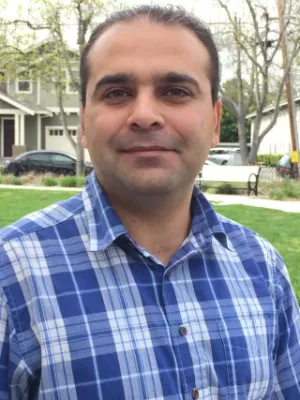
Hossein Hashemi
Researcher

Water Resources Management Through Flood Spreading Project Suitability Mapping Using Frequency Ratio, k-nearest Neighbours, and Random Forest Algorithms
Author
Summary, in English
Lack of water resources is a common issue in many countries, especially in the Middle East. Flood spreading project (FSP) is an artificial recharge technique, which is generally suggested for arid and semi-arid areas with two major aims including (1) flood mitigation and (2) artificial recharge of groundwater. This study implemented three state-of-the-art popular models including frequency ratio (FR), k-nearest neighbours (KNN), and random forest (RF) for determining the suitability of land for FSP. At the first step, suitable areas for FSP were identified according to the national guidelines and the literature. The identified areas were then verified by multiple field surveys. To produce FSP land suitability maps, several FSP conditioning factors such as topographical (i.e. slope, plan curvature, and profile curvature), hydrogeological (i.e. transmissivity, aquifer thickness, and electrical conductivity), hydrological (i.e. rainfall, distance from rivers, river density, and permeability), lithology, and land use were considered as input to the models. For the FR modelling, classified layers of the aforementioned variables were used, while their continuous layers were implemented in the KNN and RF algorithms. At the last step, receiver operating characteristic (ROC) curve was used to assess the ability and accuracy of the applied algorithms. Based on the findings, the area under the curve of ROC for the RF, KNN, and FR models was 97.1, 94.6, and 89.2%, respectively. Furthermore, transmissivity, slope, aquifer thickness, distance from rivers, rainfall, and electrical conductivity were recognized as the most influencing factors in the modelling procedure. The findings of this study indicated that the application of RF, KNN, and FR can be suggested for identification of suitable areas for FSP establishment in other regions.
Department/s
- Division of Water Resources Engineering
- LTH Profile Area: Water
- MECW: The Middle East in the Contemporary World
- Centre for Advanced Middle Eastern Studies (CMES)
Publishing year
2020-06
Language
English
Pages
1915-1933
Publication/Series
Natural Resources Research
Volume
29
Issue
3
Document type
Journal article
Publisher
Springer
Topic
- Water Engineering
Keywords
- Artificial recharge
- Data mining
- Flood spreading project
- Hydrogeology
- Random forest
Status
Published
ISBN/ISSN/Other
- ISSN: 1520-7439

